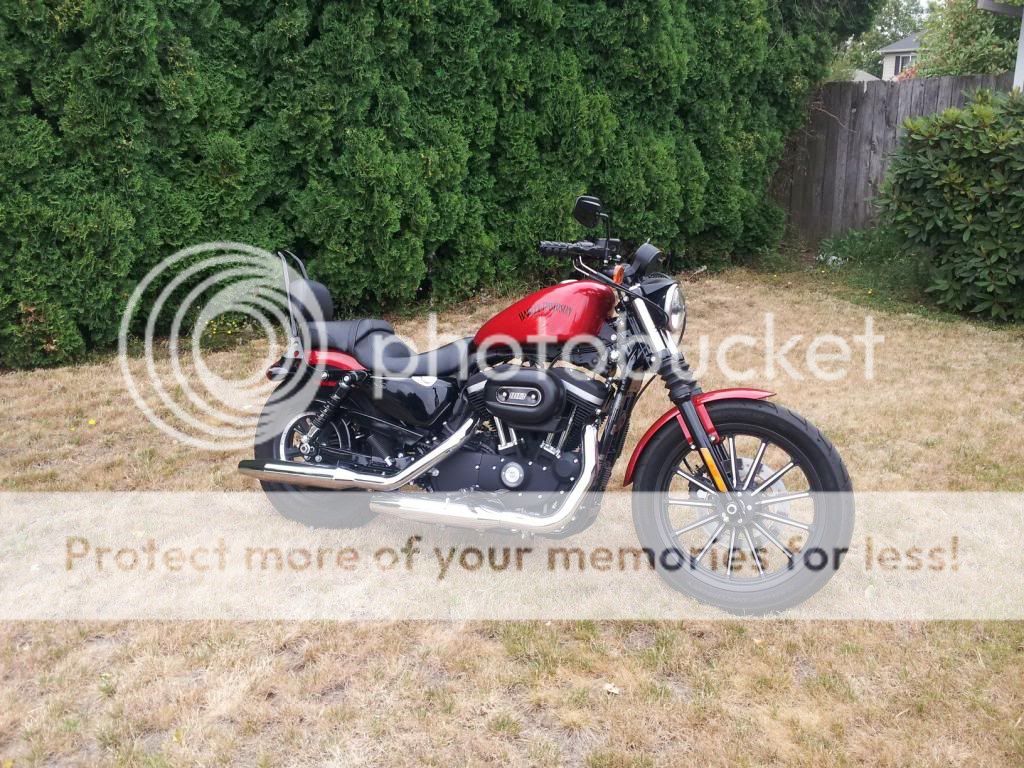So This Time Its Real.
Topic 3012 | Page 1

RedGator ,
It would be interesting to read the adventures of a first time trainer if you can find the time to keep us updated ! 

Im sure you already have these in mind...time management/HOS, trip planning, weights & balances. These seem to be the FAQ's on the forum. They are also really not touched on in most training schools. And also make sure they are aware of TruckingTruth!
HOS:
Hours Of Service
HOS refers to the logbook hours of service regulations.Jimmy. Will do! Anchorman I preach trucking truth everytime I go to my old school and speak to a class. I even tell vets about it so they can come here and help give advise.

How to use the Qualcomm and fill out a com check! I can't tell you how many Central drivers I ran into that didn't know how to use either because of their trainer. But you're a good driver so I'm sure you don't need to be told this!
Qualcomm:
Omnitracs (a.k.a. Qualcomm) is a satellite-based messaging system with built-in GPS capabilities built by Qualcomm. It has a small computer screen and keyboard and is tied into the truck’s computer. It allows trucking companies to track where the driver is at, monitor the truck, and send and receive messages with the driver – similar to email.
I think the single biggest thing I hear from almost every new driver is "I did not get enough backing"
While come checks and the qual comm and any amount of other details could be useful to someone backing is one thing this industry is in serious need of. Backing in my opinion should be hammered more than anything else.
When I used to train we would take a 2 to 3 hour break during the middle of the day if we had the time a d go to one of the large truck stops and go to the back row and for the next 2 to 3 hours they would spend the time backing. Once they backed in I would have them pull out of the spot and do different setups to simulate different backing situations.
One I really liked is what I call "Jack Knife" backing. Basically you line up at a 90 degrees to the parking space and you start out with your driver side trailer corner about even with where a trucks bumper would be in the next parking spot. And you have to pretend that you don't have alot of space to pull up to get straightened out. So the entire backing maneuver Is done with what looks like you are jack knifing the truck while continuing to put it into the hole. Basically by the time you get straight a 1/4 (quarter) of the trailer is already in the hole.
I also taught how to back into a tight spot by taking advantage of how the trailer slide on the rails as if you were moving the tandems to weight out correctly. While this backing is only used in extremely tight areas sometimes it the only way. Basically slide your tandems all the way to the back of the trailer but leave them unlocked. Then you start backing up and once you start into the hole and get almost straight you set your trailer brakes and then slide into the hole till the tandems are completely slid forward then lock them in place now you have made yourself and extra 15 foot of space,that you did not have before starting, to pull up and get straightened out to complete the straight line backing. If done right you have your trailer 15 foot already into the parking space. Used in little to no room parking lots and tight shipper and receiver docks.
There are many many tricks to backing up in almost all circumstances. Sometimes you just have to be inventive.
Or you can try the Tired and True method of backing now a days......Backup until it sounds expensive then pull up two feet and you should be good then when the o/O comes up asking why you smashed his $5000 hood you say in your best Urkel voice..."Did I Do That!!??"

Shipper:
The customer who is shipping the freight. This is where the driver will pick up a load and then deliver it to the receiver or consignee.
Tandems:
Tandem Axles
A set of axles spaced close together, legally defined as more than 40 and less than 96 inches apart by the USDOT. Drivers tend to refer to the tandem axles on their trailer as just "tandems". You might hear a driver say, "I'm 400 pounds overweight on my tandems", referring to his trailer tandems, not his tractor tandems. Tractor tandems are generally just referred to as "drives" which is short for "drive axles".
Tandem:
Tandem Axles
A set of axles spaced close together, legally defined as more than 40 and less than 96 inches apart by the USDOT. Drivers tend to refer to the tandem axles on their trailer as just "tandems". You might hear a driver say, "I'm 400 pounds overweight on my tandems", referring to his trailer tandems, not his tractor tandems. Tractor tandems are generally just referred to as "drives" which is short for "drive axles".

I also taught how to back into a tight spot by taking advantage of how the trailer slide on the rails as if you were moving the tandems to weight out correctly. While this backing is only used in extremely tight areas sometimes it the only way. Basically slide your tandems all the way to the back of the trailer but leave them unlocked. Then you start backing up and once you start into the hole and get almost straight you set your trailer brakes and then slide into the hole till the tandems are completely slid forward then lock them in place now you have made yourself and extra 15 foot of space,that you did not have before starting, to pull up and get straightened out to complete the straight line backing. If done right you have your trailer 15 foot already into the parking space. Used in little to no room parking lots and tight shipper and receiver docks.
Thats an awsome tip.
Shipper:
The customer who is shipping the freight. This is where the driver will pick up a load and then deliver it to the receiver or consignee.
Tandems:
Tandem Axles
A set of axles spaced close together, legally defined as more than 40 and less than 96 inches apart by the USDOT. Drivers tend to refer to the tandem axles on their trailer as just "tandems". You might hear a driver say, "I'm 400 pounds overweight on my tandems", referring to his trailer tandems, not his tractor tandems. Tractor tandems are generally just referred to as "drives" which is short for "drive axles".
Tandem:
Tandem Axles
A set of axles spaced close together, legally defined as more than 40 and less than 96 inches apart by the USDOT. Drivers tend to refer to the tandem axles on their trailer as just "tandems". You might hear a driver say, "I'm 400 pounds overweight on my tandems", referring to his trailer tandems, not his tractor tandems. Tractor tandems are generally just referred to as "drives" which is short for "drive axles".

I also taught how to back into a tight spot by taking advantage of how the trailer slide on the rails as if you were moving the tandems to weight out correctly. While this backing is only used in extremely tight areas sometimes it the only way. Basically slide your tandems all the way to the back of the trailer but leave them unlocked. Then you start backing up and once you start into the hole and get almost straight you set your trailer brakes and then slide into the hole till the tandems are completely slid forward then lock them in place now you have made yourself and extra 15 foot of space,that you did not have before starting, to pull up and get straightened out to complete the straight line backing. If done right you have your trailer 15 foot already into the parking space. Used in little to no room parking lots and tight shipper and receiver docks.
Thats an awsome tip.
I will tell my trainer about TT .I hope he/she says yeah "I am a member.thanks"
Shipper:
The customer who is shipping the freight. This is where the driver will pick up a load and then deliver it to the receiver or consignee.
Tandems:
Tandem Axles
A set of axles spaced close together, legally defined as more than 40 and less than 96 inches apart by the USDOT. Drivers tend to refer to the tandem axles on their trailer as just "tandems". You might hear a driver say, "I'm 400 pounds overweight on my tandems", referring to his trailer tandems, not his tractor tandems. Tractor tandems are generally just referred to as "drives" which is short for "drive axles".
Tandem:
Tandem Axles
A set of axles spaced close together, legally defined as more than 40 and less than 96 inches apart by the USDOT. Drivers tend to refer to the tandem axles on their trailer as just "tandems". You might hear a driver say, "I'm 400 pounds overweight on my tandems", referring to his trailer tandems, not his tractor tandems. Tractor tandems are generally just referred to as "drives" which is short for "drive axles".
There are many many tricks to backing up in almost all circumstances. Sometimes you just have to be inventive.
Or you can try the Tired and True method of backing now a days......Backup until it sounds expensive then pull up two feet and you should be good then when the o/O comes up asking why you smashed his $5000 hood you say in your best Urkel voice..."Did I Do That!!??"



 Im literaly ROTFLMAO!
Im literaly ROTFLMAO!

Does your company have a syllabus? Definitely everything on it if they do. If they don't, they must still have a test your trainee has to pass, so all the skills for the test for sure.
The best way to learn or improve skills is by doing them. Practicing them in small self contained doses works well. Can we assume that initially your trainee is driving and you're watching/on duty at the same time? Have them do everything and correct them if they're doing something wrong. Wrong is not the same as different from the way you do it. Wrong is something that's against company policies, the HOS , or the law - both those covered by legislation and physics.
If your goal is to make your trainee a better driver than when they started with you, a lot will fall into place. All those trainer horror stories, don't do that.
HOS:
Hours Of Service
HOS refers to the logbook hours of service regulations.New Reply:
New! Check out our help videos for a better understanding of our forum features

















Preview:
This topic has the following tags:
On The Road In Training







 TT On Facebook
TT On Facebook
Got a call that Im picking up my next student. Supposedly its really real this time! Guess 4th times a charm right? That being said Id like some input from yall. When you were in training what did you wish you were taught? What are things you could have done without? I have some ideas of my own but multiple heads are always better than one.